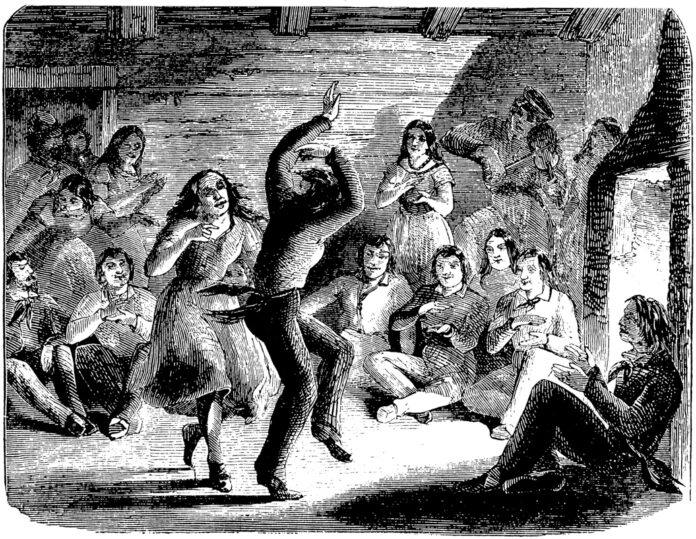
University of Lethbridge and Memorial University of Newfoundland researchers have partnered to create the Red River Jig (RRJ) Network, which investigates the historical and cultural impact of the Métis dance and song of the same name.
The multi-year project, titled “La Danse di la Rivyairre Rooj, Oayache Mannin,” started in early 2022 and uses visiting—part of how Métis communities share culture among themselves—to trace Red River Métis music and dance. The researchers purposely call their work “visiting” due to how extractive the notion of “research” can be for Indigenous people.
“We’re looking for what I call a geo-genealogy, so a geographic genealogy [or the] cultural DNA of the music,” said Suzanne Steele, a Métis researcher at U of L.
The exact origins of the Red River Jig are unknown, according to Steele, as it has a mix of Celtic, Gaelic, French and Indigenous roots. The accompanying music is crooked, meaning there are extra beats before the tune changes direction.
“There are so many different versions of the RRJ, you could pretty much say there’s a different version for every family,” said Monique Giroux, a researcher from U of L and the Canada Research Chair in Indigenous Music, Culture and Politics. “I know one fiddler who recently told us that he knows how to play 15 versions.”
“There are so many different versions of the RRJ, you could pretty much say there’s a different version for every family.”
The RRJ Network is currently in its exploratory phase, inviting Métis people involved in music and dance to share their views and knowledge. The researchers plan to visit members of the Red River Métis community and eventually discuss what is most relevant and meaningful to them about the RRJ.
“We’re going to be having guests speaking about identity and the challenges of identity, and we’re also going to be speaking to a fiddler who knows [more than] 50 variations [of the RRJ],” Steele said. “We’re going to be trying to trace—literally make a map of—all the variations and see if we can find all those family and community networks.”
Michelle Porter, a Métis researcher from Memorial University, said her team will visit the Red River Métis community again in February so they can talk to more people about how the RRJ is a part of their culture, identity and traditions.
Chris Barrett, a Métis culture and history facilitator at Winnipeg’s Louis Riel Institute, said the RRJ is the ethnogenesis of the Métis, bringing them together so they can participate in their culture while sharing it with others.
Porter, who described the Métis as landless, added that their culture can survive because of how music and dance are intertwined with their largely non-territorial identity.
“[The RRJ] came from the river [and] it came from the people that came from the mix of cultural influences, but it’s not a mix. It’s Métis,” she explained. “Because it mentions the Red River and because it’s been passed along, music was a way of sharing a conversation.”
“It’s way more than a piece of music. It’s also a performance of identity.”
Steele said the RRJ is significant to this Indigenous community because it serves as a song and dance they can play to recognize other Métis people. She added she’s seen it “jigged” on many occasions, whether in celebration, mourning or prayer.
“I’ve seen people say, ‘OK, I’m going to jig. I’m going to jig for so-and-so who’s in the hospital’ or ‘I’m going to jig for so-and-so who’s just died,’” she said. “It’s way more than a piece of music. It’s also a performance of identity.”
With the RRJ Network, Steele hopes to reconnect the traditions that have been lost through the years in the Red River Métis community.
“[Cultural] ecology has a long history of extraction from communities,” Giroux explained. “You go into a community and you collect songs, you collect interviews, and you go back home and you write about it. A lot of that doesn’t go back to the community.”
Steele, Porter and Giroux hope to support the Métis community, preserve their culture and have the RRJ Network stand out from a traditional museum exhibit once finished. They want their findings to be readable as both community resources and academic resources, so they will present them through written work, podcasts and workshop recordings.
Because Métis communities are poly-cultural and often less understood by Canadians and other Indigenous groups, according to Steele, the RRJ offers a shared tradition that brings the Red River Métis community together. By hearing the music or seeing the dance of the RRJ, she said Métis people can connect back to their Red River traditions, culture and family.
“When a Métis person hears the Red River Jig, it is home,” Porter said. “It’s a source of pride.”
Featured image provided by Gordon Goldsborough/Manitoba Historical Society.





